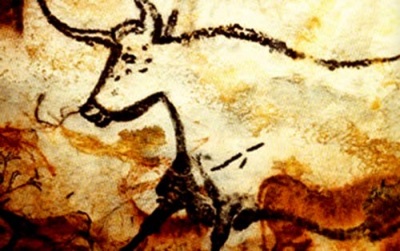Cahors is the capital of the Lot department. The city is located in a loop of the Lot, 35 km from Saint-Matré. You have a beautiful view of the city from the point de vue (viewpoint) on Moint Saint-Cyr.

Cahors is a town of 6,500 ha (10 times the size of Saint-Matré in area) and 20,000 inhabitants (160 times the size of Saint-Matré). It was founded by the Romans, Cahors was a thriving trade and university center in the Middle Ages.
The Pont Valentré is a world famous bridge. It’s a fortified 14th century bridge over the Lot (of which the construction started in 1308). The seven arches stretch majestically over the wide river. The heavy, 40 meters high towers with their blast holes and the pointed, crenellated circuit breakers clearly show that the bridge was part of the medieval defenses.

The middle tower, which served as a lookout, can be climbed in July and August.
The long construction period of the bridge is the origin of a nice legend:
To speed up the work, the builder made an agreement with the devil, who was willing to lend a hand for the usual fee. As it approached completion, the builder became very distressed and devised a trick to save his soul: the devil had to bring the water that was necessary for the building in a sieve. The result is easy to guess. Furious at his defeat and determined to take revenge, the Devil sent an imp every night to unseal the last stone of the central tower, known as the Devil’s Tower, put back in place the day before by the masons. It was not until the restoration in 1879 that the defect was remedied and the new stone is marked by a carved devil that visibly tries to pry the stone loose again. Seen from the city, you will discover the statue high on the right corner of the middle tower.
The old town of Cahors is certainly worth a visit. The walk along the ‘jardins sécrets’ (hidden gardens) can be your ideal guide for this. Cahors has been awarded several times for this initiative.
A typical and charming town 12 km from Saint-Matré, which is rightly proud of its fragrant and colourful Sunday morning market. Here it’s crowded in the high season. From the market square you can also climb through the narrow alleys to the keep tower that overlooks the region.


These towns and villages each in turn treat their visitors with fantastic points de vue, beautiful (wine) castles, canoeing on the Lot, medieval courtyards where time seems to have stood still for centuries … and all this within a radius of approximately 25 km around Saint-Matré.

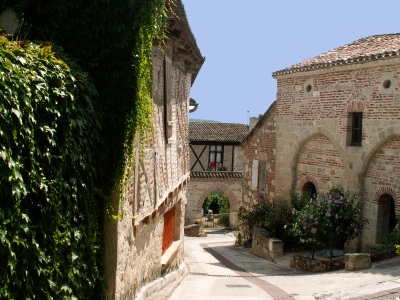
An exceptionally beautiful medieval town, which has since grown into a real artists and crafts village. It is located on a rock face that rises above the banks of the Lot. The road from Cahors to Saint-Cirq-Lapopie runs along the rocks, and is worth a trip in itself, but the pinnacle is of course Saint-Cirq-Lapopie itself.


World-famous pilgrimage site that, as it were, hangs from a 120-meter-high rock. This pilgrimage site is on the route to Santiago de Compostella and is named after the saint Saint Amadour. The black Madonna attracted as many as 30,000 pilgrims a day in the Middle Ages. Many of them did not come out of their own accord, but the pilgrimage was imposed on them as penance. On arrival at Rocamadour, the penitent had to put on a robe of hair with chains on his neck and arms, and then on his knees up the grand staircase leading from the village to the sanctuary. He begged for forgiveness in front of the chapel’s altar. Above that he received a statement as if it were a receipt. Then he received the lead pilgrimage sign. Do the walk from the village to the chapel yourself, and you will realize all too well that this must have been a terrible penance. About 70 km from Saint-Matré.


Sarlat is a fairytale medieval town, nestled between the Dordogne and the Vézère, huddled in the undulating landscape. Just as famous as Bruges in Belgium, it is certainly worthwhile to admire the old town. Sarlat boasts the largest number of classified buildings in Europe per square kilometer. Walking through the small alleys and get yourself thrown back into history. About 60 km from Saint-Matré..

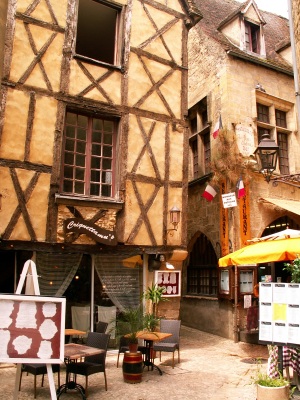
There is a market in the area almost every day. These usually take place in the morning and there are also night markets here and there.


For real bon vivants, various soirées gourmandes are organized in the region during the high season. At a small, cozy night market you can taste the regional products and wines and put together your meals at the stalls. You can choose between different starters, main courses and desserts. If you only want to drink a glass of wine with a dessert, that is also possible of course. The choice is entirely yours and everyone can eat whatever they feel like at the moment. You sit down at one of the tables and enjoy the food, wine, company and music. There is musical animation and so there is dancing and singing and the party can go on until late …
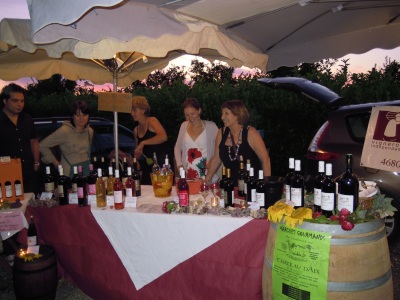
Imposing fortress from the 13th century that was converted in the 15th century into an almost impregnable stronghold. 25 km from Saint-Matré. Can be visited. Along the hill that leads to the castle, you have a climbing hiking trail that is worthwhile and takes you past some small shops where artisans offer for sale the results of their skills.


The castle is located on the border of the Périgord and the Agenais and was the seat of one of the four baronies of the Périgord: the Périgord Pourpre.
It was owned by the de Gontaut-Biron family from the 12th century to the early 20th century, but was conquered several times by, among others, the Albigensians (1211), Simon IV van Montfort (1212) and the Plantagenets in the 14th and 15th centuries. .
Every century has left its mark in terms of architectural style: medieval, gothic, renaissance to Versaille style. The occurrence of all these different architectural styles side by side creates an exceptional architecture.
The castle is fully furnished, giving you a good idea of how people used to live there. It served as the setting for several films. (± 40 km)

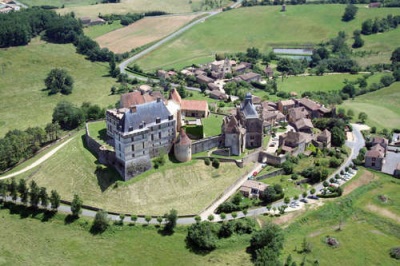
In the two-kilometer-long cave you can find prehistoric petroglyphs that are considered among the most beautiful in France. It is also a beautiful stalactite cave.
In the cave you can admire drawings of bison, horses, mammoths, aurochs, deer and figures whose meaning is unclear. In addition, one finds stencilled hands in these caves. With this technique, the hand is pressed against the rock and powdered dye is blown over it. In this way an imprint of the hand is created on the rock. There are also drawings of people and a number of petrified footprints in the caves.
The most famous image is that of the dotted horse (Cheval de Pomelé). The negative handprint with the thirteen dots is also very special.
The existence of the cave system was already known at the beginning of the 20th century, but the cave with the drawings was discovered in 1922 by two French boys aged 15 and 16. Over the years, a dozen other caves have been discovered in the immediate vicinity. discovered with petroglyphs, but only Pech Merle is open to the public. This opening is limited: only 700 visitors per day are allowed into the cave. It is therefore advisable (and certainly necessary in summer) to book in advance.
Just like in the cave of Lascaux (see below), the drawings in the cave of Pech Merle were made some 20,000 years ago by the Cro-Magnon man.
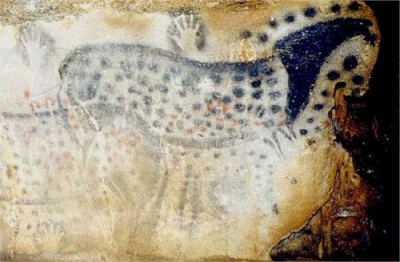
The paintings mainly focus on animals; bison, deer, rhinoceroses, cattle, horses, reindeer and bulls. The drawings and the (earth) colors have been well preserved. Many “paintings” have completely colored surfaces, others are executed as powerful line drawings and engravings.
However, the cave is threatened by bacteria and fungi. Scientists have discovered fungi – tiny white downy hairs on the bottom and side walls. It is not the first time that problems have arisen. In 1963 the public had to be denied access because of the formation of green algae and fungi, which are due to an incessant influx. Since then the cave is no longer open to the public; In the immediate vicinity in a neighboring cave, however, a replica (Lascaux II) has been made that is accessible to the public. This replica is better suited to receive large flows of visitors and is also adapted for the disabled. Construction started in 1972 at 200 meters from the cave and was completed in 1984.
